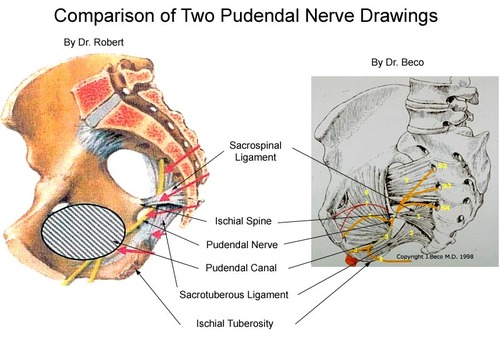Most of us poring over the forums on PNE websites are not doing it for pleasure reading; we are here because we are suffering, often in horrendous pain, and are desperate to find the way out. We are seeking “the answer” to this condition that has taken over our lives and the lives of our loved ones. If you are to the point of considering surgery, reading this stuff is scary business. I know. I remember.
It can be tempting to skip the basic information on the PNE websites and other resources and go straight to the forums instead. It’s as if keeping up with the latest personal accounts of others gives more of a chance of finding the “right” treatment or the “right” surgeon. I remember doing that too.
But it is MUCH MORE important to read and study the information already available — the basics. For example, on www.pudendalhope.org, read through the information, starting with Symptoms, Diagnosis, Treatment Options and continuing until you reach the Personal Stories and Pain Scale section.
Symptoms
http://www.pudendalhope.org/node/9
Diagnosis
http://www.pudendalhope.org/node/69
Treatment Options
http://www.pudendalhope.org/node/11
On www.tipna.org, you will find a variety of information, including:
an introductory FAQ page:
http://www.tipna.org/faq/IntroductoryFAQ.htm
extensive anatomical images:
http://www.tipna.org/info/anatomical_images/index.htm
and glossary of terms:
http://www.tipna.org/info/glossary/index.htm
Explore both sites, www.pudendalhope.org and www.tipna.org, and you will be miles ahead of many of your fellow PN patients. Before you know it, they’ll be asking YOU for information on the forums, and you can guide them to the abundant richness of information available on these two sites.
Looks like study time is in order!
Pelvic Anatomy
Study pelvic anatomy like your life depends on it, because it does (at least your quality of life). Knowing the names of structures inside your pelvis, like the sacrotuberous ligament or alcock’s canal, the sacrospinous ligament and the sacrum, could mean the difference between understanding or not understanding the surgeon you’ve waited months to see. And before your let your surgeon cut into your body, you want to KNOW what is going to be cut, and why. You will be one-half of a team that cares about your pudendal nerve and your well-being, a team made up of you and your doctor, and you need to do your part too.
PNE 101 – History and development of PNE surgery
If you were going to take a class called “PNE 101” one of the first documents you would read is the “Nantes Criteria,” which is still considered one of the basic texts of pudendal nerve entrapment. The long title is: “Diagnostic Criteria for Pudendal Neuralgia by Pudendal Nerve Entrapment” and it was written by the French group of surgeons who pioneered PNE surgery, including Dr. Roger Robert, considered the founder of the TG approach. This is followed by articles by notable names such as Drs. Beco, Bautrant, DeBisschop, and more. These can be found under “See docs publications” at <a href="http://www.pudendalhope.org/node/25.http://www.pudendalhope.org/node/25.</span>
You may want to check out one of the older sites about PNE, the European site at http://www.pudendal.com/ The background of the page is orange, which is a little hard to read, but there is some valuable information. Scroll down for photos and descriptions of the original three surgical approaches, the TransPerineal, the TransGluteal (TG) and the TransIschioRectal (TIR) and compare the advantages and disadvantages of each. Scroll down for presentations from PNE specialists and surgeons in several formats. For example, Dr. Michael Hibner in Phoenix, AZ follows Dr. Roger Roberts original TG approach but repairs the sacrotuberous ligament at the end of the surgery. This is one of those things you will have to decide for yourself if you have surgery: Do you want your ligaments cut, or not? (This has been a huge issue on the forums, by the way).
A new chapter in PNE surgery
Dr. A. Lee Dellon in Baltimore (a neurosurgeon and plastic surgeon who is one of the world leaders in peripheral nerve surgeries) has developed a new surgical approach to reach the anterior portion of the pudendal nerve at the front of the body. He makes an incision at the crease of the thigh, at the pubic ramus canal, which provides access to the dorsal and perineal branches of the pudendal nerve.
You can read about it in chapter 12 of his book, “Pain Solutions,” which is available for free at www.dellon.com. Click on Pain Solutions, and then Chapter 12. You will find it filled with illlustrations and photos of nerve decompression surgeries, as well as explanations of after-care techniques like water walking.
Knowledge is power
If you have read through all of this, you will have gained a lot of knowledge, the knowledge you will need to make a decision for yourself. And now when you post on the forums, you will know what you are talking about, and you will also know when someone posts information that is incorrect, or when others have not “done their homework” as you have done!
You know what they say: “Knowledge is power.” I don’t know about you, but when it comes to my body, and whether or not I will be able to lead a full life, or one limited by pelvic pain and disability; I want the knowledge — and the power!




